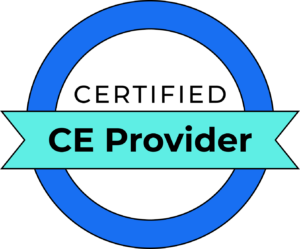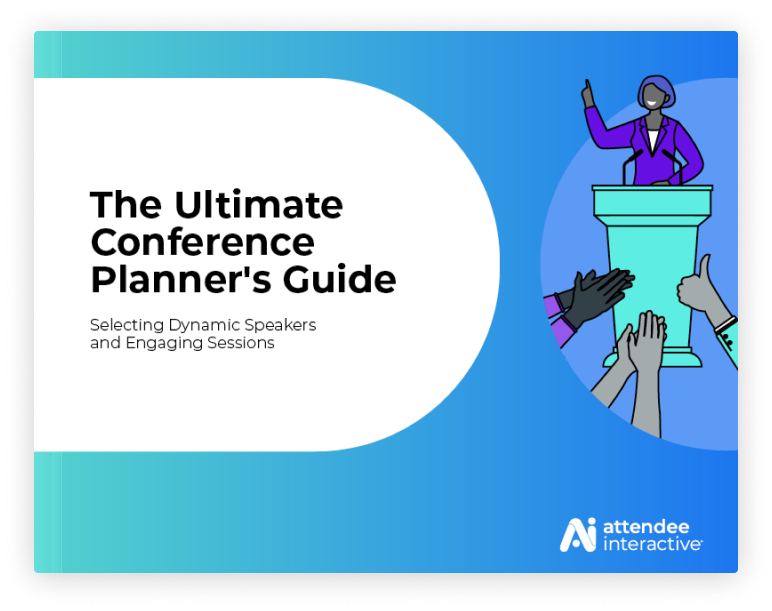A well-structured conference program can be the defining factor of a successful event. It serves as the roadmap guiding attendees through the event, providing a structured flow that balances information, engagement, and networking opportunities. An expertly designed conference program is not just a schedule — it’s a strategic tool that allows organizers to communicate the conference’s core message and value proposition to its attendees.
Attendee Interactive aims to provide insights and strategies to elevate your conference program, ensuring your event meets and exceeds your attendees’ expectations.

Defining Conference Program Goals and Objectives
Every event program design starts with understanding your conference’s core goals and objectives. When planning a conference, ask yourself why you’re organizing it, what you’d like attendees to learn, and how you plan to optimize their experience. Defining a clear purpose for your program will help inform all major decisions throughout the planning process.
It should also optimize the attendees’ learning outcomes. Their goals are the foundation upon which you should structure the entire conference program. As you start setting clear objectives for your program management conference, follow these critical steps:
- Identify your target audience: Understand who your attendees are and what they hope to gain from attending.
- Define measurable objectives: Your objectives must be specific, measurable, achievable, relevant, and time-bound (SMART).
- Align objectives with key stakeholders: Ensure your objectives agree with the expectations of sponsors, speakers, or partner organizations.
- Match objectives with event logistics: Consider the practicalities of your event, such as venue size, available technology, and budget.
- Review and refine: Review your objectives regularly and adjust them as necessary.
Aligning the program with the conference’s primary goals and outcomes is a dynamic process that requires careful planning and execution. Here are some tips to help you strike the right balance:
- Identify key themes: The program should reflect your primary goals and serve as a guide to speakers, session topics, and activities.
- Select the right speakers: Choose speakers who are experts in their field and can effectively communicate the key themes of your conference, contributing to the overall objectives.
- Design interactive sessions: Sessions involving attendees are more likely to engage participants and promote learning.
- Incorporate networking opportunities: Schedule networking sessions throughout the conference to allow attendees to connect and discuss the key themes and topics.
- Feedback and continuous improvement: Collect feedback from attendees to understand if your conference met their expectations and the established objectives.
Curating Your Conference Program
Wondering how to design a conference? Understanding and delivering what your attendees need remains paramount in program conference management. A successful conference program template creates an environment conducive to learning, networking, and professional growth.
Begin by identifying your target audience’s interests, challenges, and aspirations. Use this information to choose topics that address these areas. The choice of speakers is equally significant. They should be able to engage the audience, deliver complex content in an easily digestible manner, and inspire them to implement what they’ve learned.
Leveraging Past Attendees
When setting up an agenda, consider surveying past attendees for topic and speaker suggestions as part of your conference planning process. This direct feedback is a gold mine of insights for curating your conference program.
Attendee Interactive enables you to access prior year speaker and session evaluations. This valuable tool clearly explains which aspects were well-received and which areas need improvement.
Initiating a Call for Speakers
Another fruitful strategy to build an engaging conference program is to launch a call for speakers. This approach allows individuals from your larger audience to submit abstracts for potential presentation topics. Not only does this strategy foster a sense of community involvement and ownership, but it also ensures a broader range of perspectives and fresh content.
Interest in speaking at your conference could come from unexpected places, and holding an open call for speakers can help tap into this potential. Be sure to communicate the abstract submission process, selection criteria, and presentation guidelines.
Balancing Educational Sessions, Networking Opportunities, and Entertainment
Striking the right balance between educational sessions, networking opportunities, and entertainment is vital to a successful conference program. Here are three crucial tips:
- Design a schedule that integrates educational sessions throughout the day.
- Create spaces conducive to “natural networking.”
- Intersperse the program with entertaining elements.
Conference Program Design: Create an Effective Schedule and Flow
It’s integral to organize your conference schedule to optimize attendee engagement. Ideally, you must balance educational sessions, networking opportunities, and entertainment. Here are the best practices to keep in mind when constructing the program flow.
Dedicate Hours for the Exhibit Hall
Designating specific hours for attendees to spend in the exhibit hall is pivotal to the success of your conference. This arrangement ensures attendees have dedicated moments in their conference experience to engage directly with vendors. It also offers vendors an opportunity to showcase their products or services.
Incorporate Regular Breaks
Allocating regular intervals of 15 to 20 minutes for breaks is crucial to maintaining an engaging and relaxed conference atmosphere. Remember, your attendees have taken time out of their bustling work schedules to attend the conference, so keep the event’s program stress-free and enjoyable.

Facilitate Social Interactions
While professional credits draw attendees to your conference, the prospect of networking and socializing is a significant draw, too. Incorporating elements such as happy hours or exclusive events adds a layer of sociability, increasing the likelihood of attendees becoming repeat participants. Consider the following special activities:
- Leisure golfing
- Guided tours
- Inaugural parties
- Awards ceremonies
Organize industry-specific onsite career fairs during your event, offering additional value to your attendees.

Offering Continuing Education
Continuing education (CE) conferences are a staple in many professions, occurring nationwide and globally. Various regulatory bodies allow organizations to apply for approval to issue CE credits at their conferences. Each regulatory body has specific guidelines on your conference sessions, tracking attendance or completion, and how credits are provided to attendees and the governing body.
For instance, offering continuing medical education (CME) credits at your conference requires adherence to specific standards. According to the guidelines provided by the Accreditation Council for Continuing Medical Education (ACCME), all activities must aim to foster the maintenance, development, or improvement of the skill set, knowledge base, professional conduct, and interpersonal relationships of physicians.
It’s crucial to follow these guidelines when planning your conference and considering the inclusion of CE credits. Attendee Interactive significantly reduces the time and effort by consolidating the evaluation process, credit claiming, and certificate issuance into a single system.
Use a Speaker and Session Management Software with Session and Abstract Submission and Review Capabilities
To accommodate the growth in attendance and the evolving demands of your event, you need a speaker and session management software with session and abstract submission and review capabilities. Here are some of its benefits:
- Streamlines all processes, ensuring consistency and efficiency.
- Confirms all submission elements are complete.
- Keeps all stakeholders informed and aligned.
- Guarantees quality of content.
Attendee Interactive is a comprehensive solution that covers all aspects of event management. Its multifunctional features streamline the entire process, making your event planning smoother and more efficient.

How to Generate Audience Engagement in Your Conference Program
Inclusivity and diversity are key considerations when designing your conference program. Promoting inclusivity creates a welcoming and enriching experience for all participants. Accommodations for diverse audiences, such as accessible venues and materials, further enhance the inclusivity of your event.
There are several strategies to improve the inclusivity of your conference:
- Begin with a diverse event committee, incorporating individuals of different genders, cultures, educational backgrounds, ages, and abilities.
- Evaluate the session content, speaker diversity, and session types.
- Make the registration process inclusive.
- Extend inclusivity to all aspects of your event, including website content, onsite signage, and marketing initiatives.
- Establish an enduring impact by standardizing inclusive processes for future events.
Conference Program Frequently Asked Questions
How far in advance should I set the conference program?
Ideally, start planning your program 9 to 12 months ahead of the event to allow ample time for speaker invitations, content selection, and logistical arrangements.
How can I ensure a diverse and inclusive program?
Create a diverse planning committee and consider incorporating special accommodations for different groups of attendees throughout the event. Regularly evaluate session content diversity to guarantee an enriching experience for all participants.
What tools assist in organizing the conference program?
Event management software like Attendee Interactive helps streamline programming conferences development, from selecting speakers and topics to assigning rooms and running reports. It also facilitates seamless communication between committee members while helping track progress in real-time.
How do I decide on the conference theme and focus?
Start by understanding the target audience, interests, and needs. Alternatively, if your event has multiple themes or tracks, consider creating sub-themes to ensure continuity throughout the program.
How can I encourage attendee engagement during the conference sessions?
Incorporate several interactive elements like polls, Q&A sessions, and virtual networking activities. Also, consider offering incentives to attend the conference. Finally, remember to provide plenty of breaks throughout the day.



